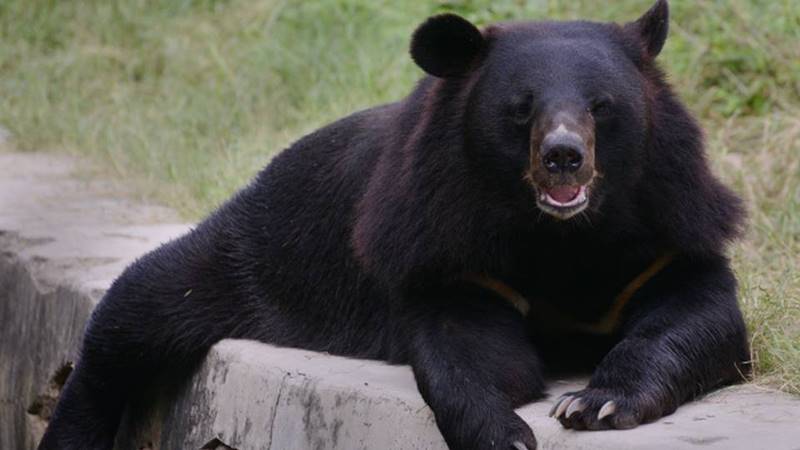
Himalayan Black Bear, The Beast That Could Walk On Both Feet.
Who doesn’t like to see a bear? Regardless of their wild and savage nature, this buffy and fluffy beast always looks adorable, it’s no wonder their soft toy version is a favorite of children around the world. In the Himalayas there is a black bear species with white V marks on their chests that make them striking.
Physical Description
Himalayan black bear has soft and shiny hair, with a white V patch on their chest. While their muzzles are light brown. Its appearance is almost the same as a brown bear, but its shape is slimmer and also more agile.
Their feet are strong and very good for climbing trees, even when their hind legs are injured they can still climb trees without much trouble. They are also known as bears who walk with both feet or bipedal, and they can do that up to a quarter of a mile away. An advantage compared to other types of bears.
The average weight for adult male is 60 to 200 kg, although a British sportsman suspects that one black bear he had shot in India could weighs about 360 kg.
Habitat And Distribution
Himalayan black bears live a lot in the Himalayas in Tibet, India, Nepal, Pakistan and also China. They can live on high or low land, depending on the weather. In summer they are usually in an area of 10 thousand to 12 thousand feet above sea level, in the mountains around Bhutan, China, India, Nepal, Tibet. While in winter they go down to lower land and usually stay at an altitude of 5 thousand feet and also move to warmer areas near tropical forests.
Food
As omnivores or all-eating animals, their food is quite flexible. They like honey, roots, fruits, nuts, seeds, insects, and so on. In conditions of urgency when food starts rarely found, they can become aggressive and prey on livestock.
Breeding
Himalayan black bears generally reach sexual maturity at the age of 3 years, then they will look for partners and this mating season usually occurs in October. February is an important period for them as many babies are born this month. February is winter, and when the babies are born, usually their mothers are still in hibernation mode. They then stay under the protection of the mother until the age of 2 years.
Threat
This species is categorized as ‘venerable’ by IUCN Red List, due to the decline in their population together with the loss of forests for the timber industry, human settlements, and also poaching. In 1977, there was a rule that prohibited poaching of the Himalayan black bear, but to this day the practice still happens.
Where you can see this wild in Bali ?
of course you should come and visit Bali Safari Park if you want see the Himalayan Black bear. Take your family and bring your camera for take pictures of this creature.
